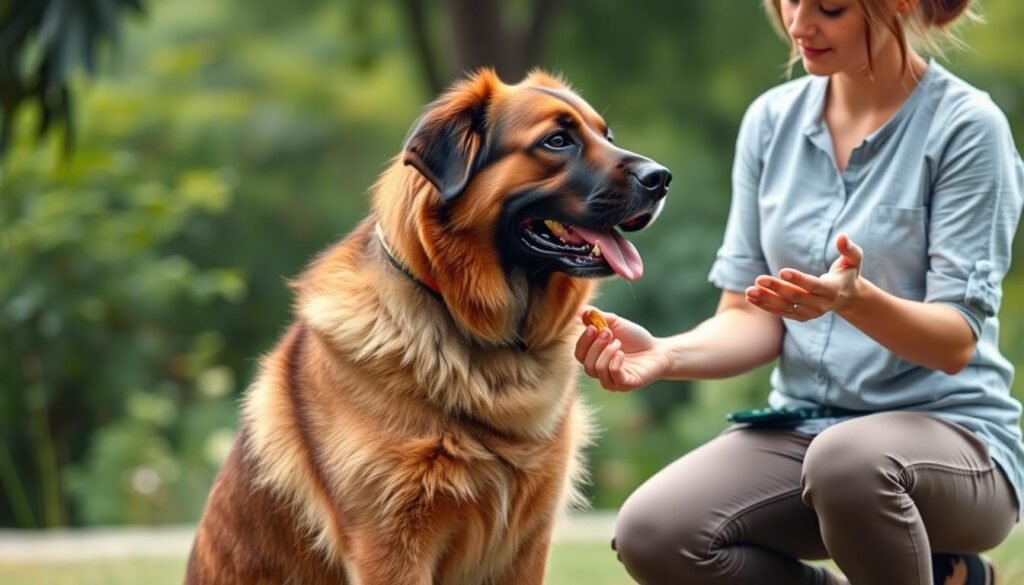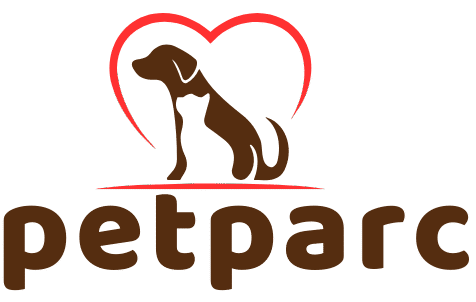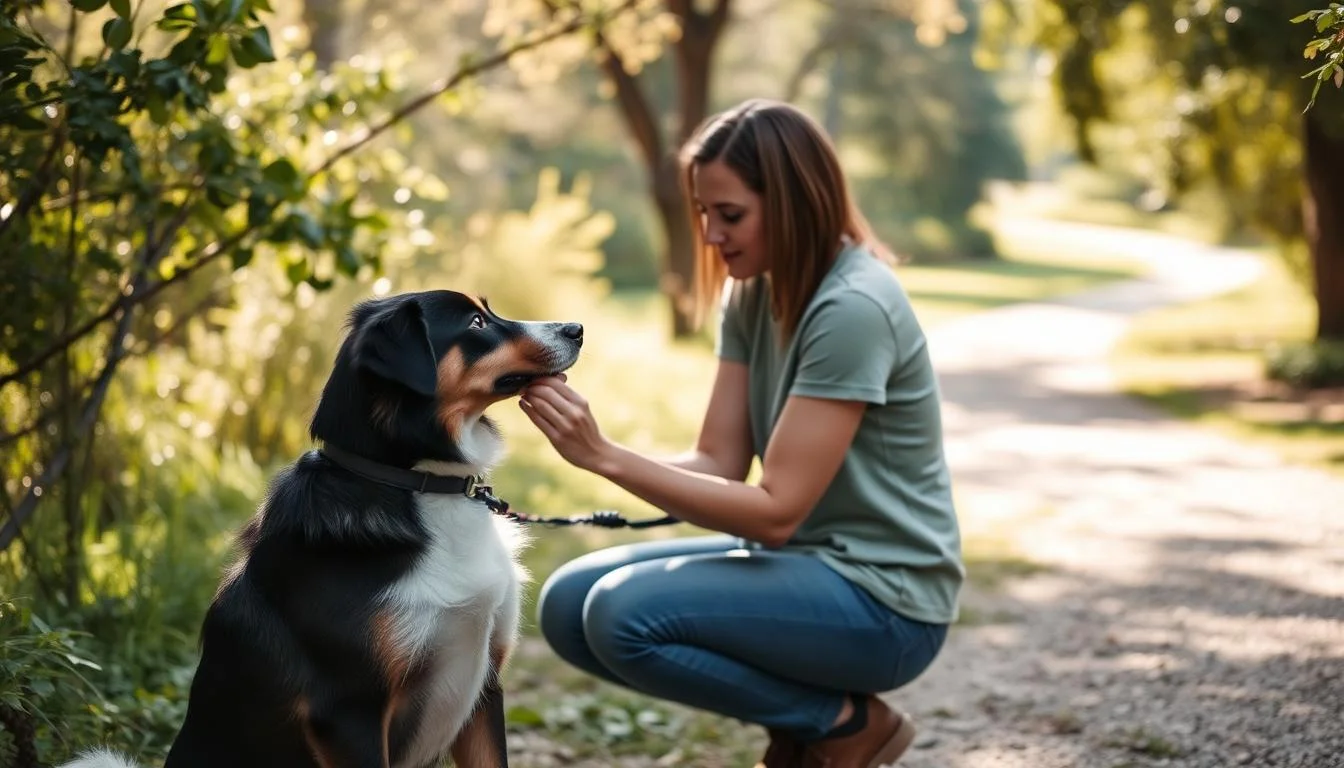How to Stop Dog Reactivity: Effective Strategies for Calm Behavior
Table of Contents
If you’re dealing with a reactive dog, you might feel frustrated and worried. Dr. Katherine A. Houpt explains that a reactive dog overreacts to things most dogs ignore.
Many dog owners face this issue. It’s crucial to tackle it to keep your home safe and calm for everyone.
This article will show you how to calm your reactive dog. We’ll cover aggression training and useful tips for this tough situation.
Learning what makes your dog react and using the right methods can make them more confident and calm.
Understanding Dog Reactivity: What It Is and Why It Happens
It’s key for dog owners to understand dog reactivity to fix their pet’s behavior. Dog reactivity is when a dog reacts strongly to things like other dogs, people, or sounds. This can show as barking, lunging, or pulling on the leash. It usually comes from fear, anxiety, or frustration.
Common Signs of Reactive Behavior in Dogs
Reactive dogs can act in ways that worry or embarrass their owners. They might bark, growl, lunge, or pull on the leash when they see certain things. Spotting these signs is the first step to fixing the problem and starting canine behavior modification.
Differentiating Between Reactivity and Aggression
It’s important to tell the difference between reactivity and aggression. Both can look aggressive, but reactivity comes from fear or anxiety. Aggression might be about wanting to dominate or protect. Knowing this helps create a good plan to reduce dog reactivity.
The Impact of Reactivity on Your Dog’s Wellbeing
Reactivity can really hurt a dog’s happiness and health. It can cause stress and anxiety that lowers their life quality. If not fixed, it can lead to worse behavior and harm the dog’s bond with its owner. It’s crucial to tackle reactivity to make your dog’s life better and happier.
The Root Causes of Reactive Behavior
To tackle reactivity in dogs, we must find the root causes. These can include fear, anxiety, and even genetics. Understanding these causes is key to managing aggressive behavior in dogs effectively.
Fear and Anxiety as Triggers
Fear and anxiety often spark reactive behavior in dogs. When they sense danger, they might fight, flee, or freeze. Training techniques aim to lessen these fear and anxiety responses.
Past Trauma and Negative Experiences
Past trauma or negative experiences can lead to reactivity. Dogs that have faced abuse or traumatic events may react to protect themselves. Knowing a dog’s history helps in addressing their reactivity.
Genetic Predisposition and Breed Tendencies
Some breeds or dogs may be more likely to be reactive due to genetics. While genetics is not the only factor, it can influence a dog’s tendency to react. It’s important to recognize breed tendencies and individual temperaments.
Lack of Socialization and Environmental Factors
Lack of socialization and environmental factors also play a role. Dogs not exposed to various environments, people, and animals may become reactive. They fear the unknown.
Experts stress that socialization is crucial for a well-adjusted dog. Proper socialization and gradual exposure to different stimuli can help prevent reactive behavior.
“A well-socialized dog is a happy dog, and a happy dog is less likely to develop reactive behavior.”
How to Stop Dog Reactivity Through Management Techniques
To reduce your dog’s reactivity, use management techniques to limit their exposure to triggers. These methods are not a permanent fix but are crucial in the short term. They help prevent your dog from practicing reactive behaviors.
Creating a Safe Environment
First, create a safe space for your dog. This means controlling what triggers their reactivity. For example, if they react to other dogs, change your walking route or avoid dog parks. Securing your home environment by blocking windows or using baby gates also helps.
Using Barriers and Distance Control
Barriers and distance are key in managing reactivity. Physical barriers like fences or baby gates work well. Carrying objects, like an umbrella, can also act as a barrier. Distance control means keeping a safe distance from triggers to prevent reactions. This is especially helpful in the early stages of training.
The Importance of Predictable Routines
Predictable routines give reactive dogs a sense of security. A consistent daily schedule for feeding, exercise, and play reduces stress and anxiety. A calm dog is less likely to react to triggers, making routines a valuable tool.
Managing Exposure to Triggers
Managing exposure to triggers involves avoiding them when possible and using desensitization and counterconditioning when you can’t. Keeping a reactivity journal helps identify patterns and anticipate triggers. This allows you to prepare your dog in advance.
| Management Technique | Description | Benefit |
|---|---|---|
| Creating a Safe Environment | Identify and control triggers at home and during walks. | Reduces exposure to triggers. |
| Using Barriers and Distance Control | Use physical barriers or maintain a safe distance from triggers. | Prevents reactive responses. |
| Predictable Routines | Maintain a consistent daily schedule. | Reduces stress and anxiety. |
| Managing Exposure to Triggers | Avoid triggers when possible and use desensitization and counterconditioning. | Helps in gradual exposure to triggers without reactive responses. |
The Foundation of Behavior Modification
Effective canine behavior modification starts with clear communication, trust, and realistic goals. When dealing with dog reactivity, a strong foundation is key. It helps create a positive and calm space for your dog.

To begin, clear communication with your dog is essential. Pay attention to your body language, voice, and commands. Being consistent helps avoid confusion and ensures your dog knows what’s expected.
Establishing Clear Communication with Your Dog
Clear communication reduces your dog’s stress and anxiety. These are common causes of reactive behavior. By being mindful of how you interact, you make a more stable environment for your dog.
Building Trust and Confidence
Building trust and confidence is crucial. Use positive reinforcement training to encourage good behavior. This strengthens your bond and helps your dog feel more confident, reducing reactivity.
“The goal of training is to create a strong bond between dog and handler, built on trust, respect, and clear communication.”
Setting Realistic Expectations and Timeframes
It’s vital to set realistic expectations and timeframes for your dog’s improvement. Behavior modification takes time, patience, and persistence. Setting reachable goals helps track progress and keeps you motivated.
By focusing on these key areas, you can help reactive dogs become calmer and more balanced.
Effective Training Protocols for Reactive Dogs
Training a reactive dog needs patience, consistency, and the right methods. These help them become calm and well-behaved. Understanding and using specific training techniques for reactive dogs is key.
Several training methods are effective in reducing dog reactivity. These include counter-conditioning, desensitization, positive reinforcement, and clicker training. Each method targets different aspects of reactive behavior.
Counter-Conditioning Techniques
Counter-conditioning makes a trigger something pleasant, like treats or praise. For example, when your dog sees another dog, give them a treat. This helps them associate the other dog with something good.
Desensitization: A Step-by-Step Approach
Desensitization is a gradual process. It involves exposing your dog to the trigger at a safe distance. Then, you gradually increase the intensity over time. This helps your dog become less reactive to the trigger.
Positive Reinforcement Strategies
Positive reinforcement rewards your dog for calm behavior. Use treats, praise, or play to encourage calmness in situations that might normally trigger reactivity.
Clicker Training for Reactive Dogs
Clicker training is a precise method of positive reinforcement. It uses a clicker to mark the exact moment your dog shows desired behavior. This technique is great for reactive dogs, as it allows for clear communication and immediate reward.
By combining these training techniques for reactive dogs, you can create a comprehensive dog aggression training plan. This plan addresses your dog’s specific needs and helps them become more calm and well-behaved.
Practical Exercises to Reduce Reactivity
To tackle dog reactivity, it’s key to add specific exercises to your daily routine. These exercises aim to make your dog less reactive over time. They improve their behavior and strengthen your bond with them.
The “Look at That” Game
The “Look at That” game teaches your dog to focus on you when they see a trigger. By rewarding them for looking at you, they learn to see triggers as positive. Start by having your dog on a leash and introduce a trigger at a safe distance.
Encourage your dog to look at you and reward them with a treat. As you get closer to the trigger, keep your dog’s focus on you.
Tip: Start with low-level triggers to avoid overwhelming your dog.
Emergency U-Turns and Pattern Interrupts
Emergency U-turns can quickly stop a reactive situation. By suddenly changing direction, you break your dog’s focus on the trigger. Practice U-turns in different places to help your dog get used to this sudden change.
Pattern interrupts also help by introducing an unexpected stimulus or action. This breaks your dog’s reactive pattern.
Threshold Training for Gradual Progress
Threshold training gradually exposes your dog to triggers at a safe distance. This helps them get used to triggers without reacting. Start by finding your dog’s threshold distance, then slowly decrease it while rewarding calm behavior.
Focus and Attention Exercises
Focus and attention exercises keep your dog’s attention on you, even with triggers around. Try “watch me” or “look” to strengthen their focus. Reward them for eye contact and gradually add more distractions.
Relaxation Protocols
Relaxation protocols, like massage or calm verbal cues, reduce your dog’s stress and anxiety. This makes them less reactive. Practice these regularly to help your dog relax and feel secure in different situations.
Tools and Equipment That Can Help
The right tools and equipment are key to managing your reactive dog’s behavior. They help create a safer space for your dog and others. Using the right gear makes things easier for everyone.
Choosing the Right Leash and Harness
Finding the right leash and harness is crucial. A good harness spreads out the force of pulling, making walks more comfy. It also lowers the chance of injury. Look for a harness with a front-clip leash to guide your dog better.
Calming Aids and Their Effectiveness
Calming aids like pheromone diffusers and calming collars can help. They mimic natural calming signals or apply gentle pressure. While they work differently for everyone, they’re worth trying as part of a bigger plan to manage reactivity.
Training Treats and Reward Systems
Training treats and rewards are key for good behavior. High-value treats can keep your dog’s attention on you. This helps them ignore triggers. Being consistent and positive is important for training success.
Muzzle Training for Safety and Confidence
Muzzle training is helpful for managing reactivity, especially around triggers. Start by introducing the muzzle slowly and make it positive. This helps your dog feel safe and confident. Training should be done slowly and carefully to avoid stress.
When to Seek Professional Help
Knowing when to get help is key for dog owners with reactive dogs. Handling dog reactivity can be tough and even risky if not done right.

Signs Your Dog Needs a Behavioral Specialist
If your dog’s reactivity is getting worse, it’s time to get professional help. Look for signs like trying many training methods without progress. Also, if your dog’s behavior is causing harm or fear, it’s a clear sign to seek help.
What to Expect from Professional Training
Professional trainers or behaviorists can create a plan just for your dog. They’ll help you find out why your dog is reactive. Then, they’ll teach you how to manage and possibly fix the issue.
Working with Veterinarians on Medical Approaches
Reactivity can sometimes be due to health problems. Talking to your vet can uncover if there’s a medical reason. They might suggest adding medical treatment, like anxiety meds, to your dog’s training.
Getting professional help is a big step towards better behavior and a stronger bond with your dog.
Conclusion: The Journey to a Calmer, Happier Dog
Reducing dog reactivity takes patience and the right strategies. By using techniques like creating a safe space and desensitization, your dog can become calmer. This helps them feel more confident.
Remember, every dog is different. What works for one might not work for another. Being consistent and patient is key. If you’re having trouble, getting help from a certified trainer or behaviorist is a good idea.
With the right approach, your reactive dog can live a happier life. Follow the strategies and stay committed to their training. This will help reduce reactivity and strengthen your bond with your pet.

